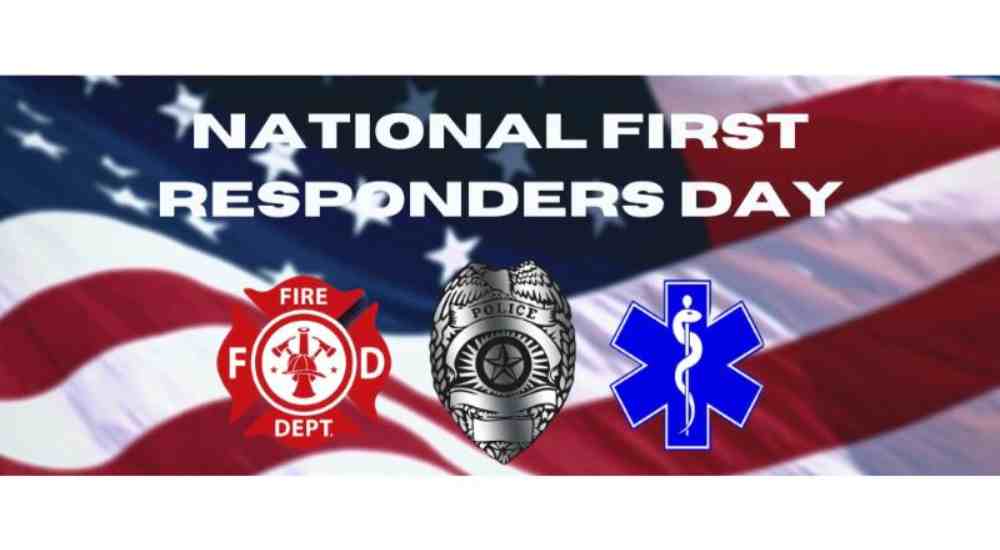Heroes are not born; they are made. They are ordinary people who rise to the occasion when confronted with extraordinary circumstances. First responders embody this heroism every day of their lives. They are the ones who run toward danger when others instinctively flee. As we approach October 28, 2023, a date of utmost significance, we prepare to honour and pay tribute to these brave men and women on National First Responders Day.
It’s a day when the nation unites to recognize and celebrate the unwavering dedication, selflessness, and sacrifices made by our first responders, who make it their business to take immediate action when disaster strikes.
History and Significance
Origins of National First Responders Day
In 2017, the United States Congress designated October 28 as National First Responders Day, marking a pivotal moment in recognizing the heroic efforts of those on the scene in times of crisis. The establishment of this day is a testament to the nation’s immense gratitude for the individuals who dedicate their lives to safeguarding our communities. The resolution, introduced by Senators Elizabeth Warren and Tom Cotton and Representatives Mark Meadows, Michael Capuano, and Elijah Cummings, underlines the bipartisan support for honouring first responders.
One significant aspect of the establishment of National First Responders Day is the support it garnered from the family of Sean Collier. Sean Collier, a police officer, was ambushed and tragically murdered during events related to the 2013 Boston Marathon bombing. His family’s backing of the resolution is a poignant reminder of the sacrifices first responders and their families made.
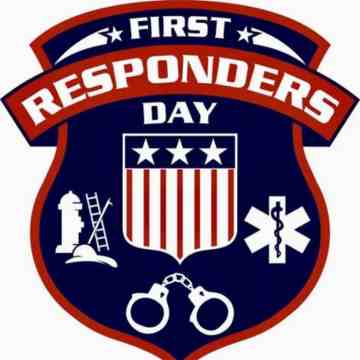
Evolution of First Responders and Their Role
The history of first responders is deeply intertwined with society’s ever-evolving needs and challenges. These dedicated individuals have consistently adapted to fulfill their crucial role in safeguarding public safety. The significance of their role became glaringly evident during events like the tragic 9/11 attacks when firefighters, police officers, paramedics, and more rushed into the heart of Lower Manhattan to save lives. This harrowing incident showcased the unwavering commitment of first responders to protect and serve.
Over time, the demands on first responders have evolved, necessitating a shift in training and protocols. The need for standardized training and education became apparent, leading to the establishment of the first nationally recognized curriculum for Emergency Medical Technicians (EMTs). This standardization was critical in equipping first responders with the skills required to handle various emergencies, from life-threatening medical situations to natural disasters.
The Evolution of First Responder Training
1966 Study and the Need for Change
In 1966, a pivotal federal study titled “Accidental Death and Disability: The Neglected Disease of Modern Society” shed light on a critical issue – accidental injuries were identified as the “leading cause of death in the first half of life’s span.” This revelation sent shockwaves through the medical and emergency response communities, prompting reevaluation of how society approached emergency care.
The report further highlighted a staggering statistic: in 1965 alone, vehicle accidents claimed more American lives than the entire Korean War. It even went as far as to state that seriously injured citizens stood a better chance of survival in a war zone than on the average city street. This shocking revelation underscored the urgent need for change in how accidents and medical emergencies were addressed.
Standardized Training for EMTs
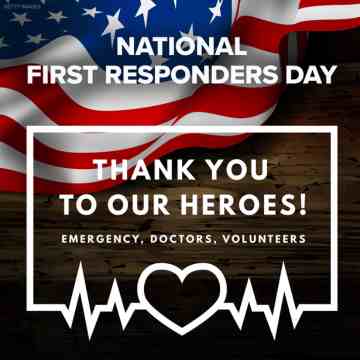
Recognizing the gravity of the situation, experts began advocating for the standardization of emergency training for a range of first responders, including rescue squad personnel, police officers, firefighters, and ambulance attendants. This call for standardization marked a significant turning point in the history of first responder training.
The push for standardization eventually led to the development of the first nationally recognized curriculum for Emergency Medical Technicians (EMTs). This curriculum equipped EMTs with the essential life-saving skills to respond effectively to medical emergencies and accidents. It laid the foundation for higher care and professionalism within the emergency response field.
Education and Training for Paramedics Today
Today, the training and education required for paramedics have evolved significantly. The role of paramedics has expanded to include more advanced procedures, making their education and training even more extensive. These highly skilled professionals are at the forefront of critical care, providing advanced medical interventions in emergencies.
Paramedic training programs today can span one to three years, encompassing a comprehensive range of life support techniques. These include cardio-pulmonary resuscitation (CPR), tourniquet application, treatment of wounds, and much more. The advanced skills acquired by paramedics enable them to respond to a wide array of life-threatening situations, making them a crucial component of the first responder community.
The evolution of first responder training, from the wake-up call of the 1966 study to the development of standardized EMT curricula and the extensive training of modern paramedics, reflects the unwavering commitment to equipping these heroes with the knowledge and skills they need to save lives and provide critical care in the most challenging circumstances.
Key Milestones in First Responder Training
The evolution of first responder training has been marked by significant milestones that have not only improved the quality of emergency care but have also inspired and shaped the course of the profession. These milestones have played a vital role in developing first responder training and advancing life-saving techniques.
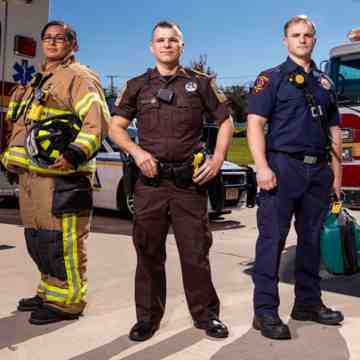
1. Introduction of EMT Programs in Colleges
One of the pivotal milestones in the history of first responder training was the introduction of EMT programs in colleges. In the 1980s, institutions such as UCLA and Eastern Kentucky University were the first to invite national accreditors to review their EMT programs. This move elevated the status of EMT training, ensuring that it met higher educational standards and provided comprehensive instruction to those pursuing a career in emergency medical response. This shift professionalized the field and paved the way for developing advanced life-saving skills.
2. Emergence of Advanced Airway Management
As the demands on first responders grew, so did the scope of their training. Health experts began recognizing the need for more advanced skills, including advanced airway management. This development allowed first responders to better manage patients with compromised airways, providing critical assistance to those in respiratory distress. Incorporating advanced airway management in training significantly improved the quality of care and expanded the capabilities of first responders.
3. Influence of the TV Series “Emergency!”
The popular TV series “Emergency!” profoundly influenced the perception of first responders and their role in society. While purely fictional, the series showcased paramedics providing care in a manner that most Americans had never seen before. It set new expectations for the job and encouraged many Americans to pursue careers in emergency medical services. “Emergency!” not only entertained but also educated the public about the vital work of first responders.
4. Importance of Advanced Cardiac Life Support (ACLS) Training
Advanced Cardiac Life Support (ACLS) training is a crucial milestone in first responder education. ACLS provides first responders with essential skills to manage patients experiencing a heart attack or cardiac arrest. While ACLS training was not initially required for paramedics, its importance became evident, leading to its incorporation into paramedic training and certification in the mid-1980s. ACLS training equips first responders with the tools and knowledge to save lives in critical cardiac emergencies.
5. Role of Andrew Collier in Establishing a Day of Recognition
Andrew Collier, the brother of Sean Collier, an officer killed during the Boston Marathon bombing, played a pivotal role in establishing a day of recognition for first responders. His dedication and commitment to honouring the sacrifices of first responders have been instrumental in bringing National First Responders Day to the forefront. Andrew’s efforts remind us of the profound impact that a single individual can have in promoting gratitude and recognition for these heroes.
How to Observe National First Responders Day
National First Responders Day is a meaningful occasion to express appreciation for the selfless individuals who dedicate their lives to protecting and serving our communities. Here are practical ways to observe this day and show your gratitude to first responders:
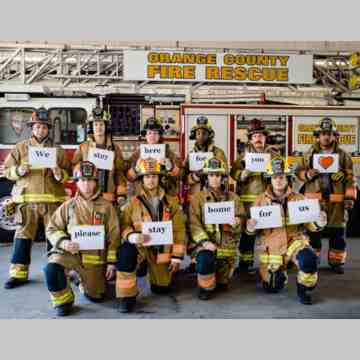
1. Write Thank-You Cards
A simple yet heartfelt gesture is to write personalized thank-you cards to your local first responders. Take the time to express your appreciation for their dedication and courage. These cards can brighten their day and serve as a tangible reminder of the community’s support.
2. Fundraising for First Responders
Consider organizing or participating in fundraising events to support first responders. Local foundations and charities often accept donations on behalf of first responders. You can host activities like car washes, bake sales, 5K runs/walks, or any other fundraising event to raise funds for equipment, resources, and initiatives that benefit first responders.
3. Volunteering
If you have the time and the inclination, consider volunteering with your local first responders. Many communities offer opportunities for civilians to get involved, whether helping with administrative tasks or providing assistance during emergencies. Your support can make a real difference in their work.
4. Take a CPR Course
One of the most practical ways to support first responders is by taking a CPR (Cardiopulmonary Resuscitation) course. CPR training equips you with life-saving skills and knowledge, allowing you to provide immediate assistance in emergencies. Learning CPR is a proactive way to contribute to the safety of your community.
5. Attend Community Events
Many communities organize events and gatherings on National First Responders Day. Attend these events to show your support and solidarity with your local heroes. Participating in community events allows you to express your gratitude and helps create a sense of unity and appreciation among residents.
6. Promote Awareness on Social Media
Spread awareness about the significance of National First Responders Day on social media. Share stories, photos, and information about first responders and their crucial role in your community. Use hashtags like #NationalFirstRespondersDay to join the online conversation and inspire others to express gratitude.
7. Support Local First Responder Organizations
Research local organizations that support first responders and consider contributing to their efforts. Your support can help these organizations provide essential resources, training, and assistance to first responders in your area.
First Responders by the Numbers
Understanding the sheer scale and scope of first responders’ challenges and risks is crucial to appreciate their dedication and the significance of National First Responders Day. Here are some statistics that shed light on the demanding nature of their work:
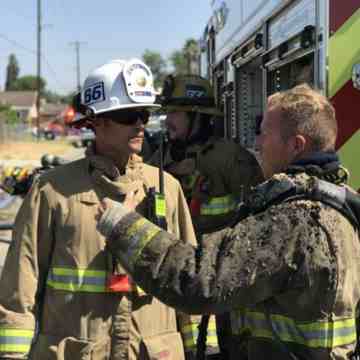
1. Annual Firefighter Deaths
Approximately 100 firefighters make the ultimate sacrifice each year in the line of duty. These brave men and women put their lives on the line to protect us and our communities, often facing extreme dangers.
2. 9-1-1 Call Volume
An estimated 240 million 9-1-1 calls are made annually in the United States. These calls represent various emergencies, from medical crises to accidents and natural disasters. First responders must be prepared to respond to any situation at a moment’s notice.
3. Rapid Response
A fire department in the United States responds to a fire every 24 seconds. The speed at which first responders must react underscores the urgency of their work and the critical role they play in mitigating emergencies and saving lives.
4. Patients Cared for by EMS
Emergency Medical Services (EMS) care for approximately 22 million patients annually. This vast number includes individuals who require medical attention for various conditions, from injuries and trauma to life-threatening illnesses.
The Importance of National First Responders Day
National First Responders Day is not just a day on the calendar; it’s a crucial opportunity to recognize and honour our first responders’ extraordinary sacrifices and unwavering dedication. Here are some key aspects that underscore the importance of this day:
1. Recognizing Sacrifices and Dedication
First responders face high risks virtually every time they step onto the front lines. Whether battling flames, responding to medical emergencies, or maintaining law and order, they do so with courage and commitment. National First Responders Day is an occasion to acknowledge their heroism and their profound impact on our communities. It serves as a moment of reflection, gratitude, and appreciation for the selfless acts of these everyday heroes.
2. The Physical and Mental Toll
The work of first responders takes a significant physical and mental toll. They are regularly exposed to traumatic and stressful situations, leading to emotional and psychological strain. Many first responders experience Post Traumatic Stress Disorder (PTSD) due to the distressing scenes they witness. The long hours, demanding shifts, and periods of separation from their families also take a toll on their well-being. National First Responders Day is a reminder that their service comes at a cost and emphasizes the importance of supporting their mental and emotional health.
3. Call to Action and Support
While first responders willingly embrace the challenges of their roles, it’s our responsibility as a society to reciprocate their dedication with support and resources. National First Responders Day serves as a call to action, encouraging individuals and communities to rally behind these heroes. It’s a reminder that there is much more we can do to improve the lives of first responders. This includes providing resources for mental health support, ensuring access to quality training, and fostering an environment that values their contributions.
Conclusion
In reflecting on the significance of National First Responders Day, we’ve explored the remarkable history, evolution, and milestones of first responder training. We’ve learned about the challenges and risks they face, the physical and mental toll of their work, and the sacrifices they and their families make. This day serves as a crucial reminder of their dedication and calls for support and action.
National First Responders Day, marked on October 28, is not just another date on the calendar; it’s a moment to pay tribute to these heroes who run toward danger when the rest of the world instinctively flees. It’s a day for us to recognize their sacrifices and acknowledge the unwavering commitment they demonstrate each day.
As we conclude, we encourage you to take action on this day. Write thank-you cards, make donations, organize fundraisers, volunteer your time, or raise awareness on social media. National First Responders Day is an opportunity to express your gratitude in tangible ways, to let these heroes know their service is deeply appreciated, and to support them in their selfless endeavours.
October 28 is a day to celebrate and honour first responders for their exceptional courage, compassion, and unwavering dedication. It’s a day when we, as a community, come together to say “Thank you” to the individuals who put their lives on the line to protect and serve us. So, mark your calendars and join in the collective expression of appreciation on this National First Responders Day. Together, we can make a meaningful difference in the lives of those who make a difference in ours.
Call to Action
Your engagement can make a difference. We encourage you to share this improved content and spread the message of National First Responders Day far and wide. Let your friends, family, and community know about the significance of this day and the heroes we celebrate.
Share this content on your social media platforms, and use relevant hashtags like #NationalFirstRespondersDay to amplify the message. Engage with the improved content, comment with your expressions of gratitude, and encourage others to join in.
Together, we can make National First Responders Day a powerful and heartfelt tribute to those who risk their lives for our safety. By sharing and participating in the conversation, you contribute to a collective expression of appreciation for the unwavering dedication of first responders. Thank you for taking action and honouring our local heroes.

